Should a vent hood duct be insulated?
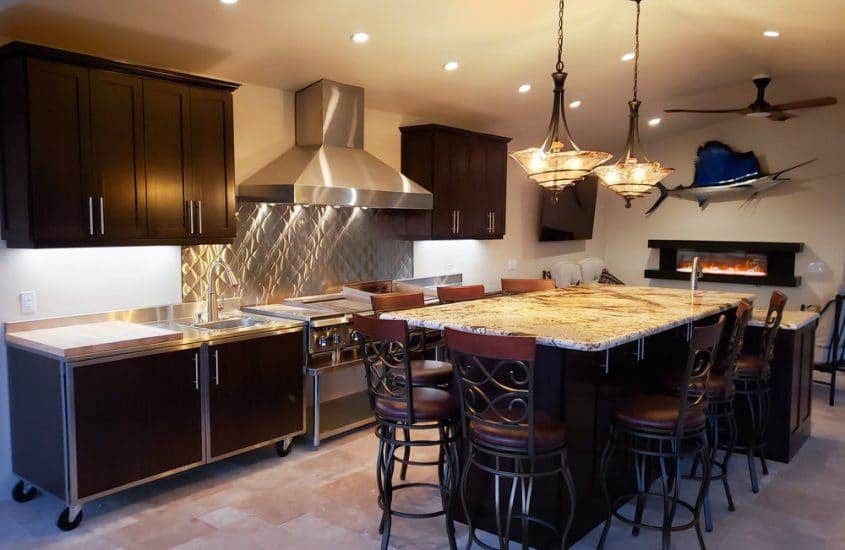
You can insulate your vent hood duct, but it’s not required. Insulating your vent hood duct will keep the noise down and keep your greasy kitchen air from escaping into your joists and attic.
Table of Contents
How do you stop condensation in a range hood vent?
To stop condensation in a range hood vent, you can:
- Install a backdraft damper.
- Install a roof cap or wall cap.
- Insulate your ductwork.
- Replace your damper.
- Change your hood to ductless or recirculating.
- Add some downward pitch to the end of your duct run.
Depending on your kitchen design and setup, not all of these options may work for you. They are a great starting point to solving the problem of condensation in your range hood duct.
Condensation in a range hood vent occurs when a cold range hood vent comes into contact with warm air from your kitchen. It also happens when cold air escapes through your wall or roof cap and inside your duct.
Typically condensation occurs in the winter – it’s especially apparent in colder climates. You likely won’t have water building up inside your duct during the spring and summer. If you do, it’s most likely not condensation.
But, some condensation is normal. If you’re steaming a lot of vegetables or boiling a large pot of water, the steam may condensate (or turn into a liquid) inside your range hood duct.
Option 1 – Install a backdraft damper.
A backdraft damper is a vent that sits near the exterior wall or ceiling. It closes when your range hood is not in use. This keeps cold air, debris, dirt, and small animals from entering your duct. It eliminates any draft that may move through your ductwork. It also stops your warm kitchen air from escaping to the outside and producing condensation.
Option 2 – Install a roof cap or wall cap.
A roof cap or wall cap sits on the end of your duct run. It keeps debris and small animals from getting inside your duct, between the damper and your wall or roof. It keeps the range hood duct clean so you won’t have to spend money on maintaining it down the line.
It also reduces the amount of cold air that gets in your home and warm air that escapes out. Like a backdraft damper, this will reduce condensation inside your vent hood.
Option 3 – Insulate your ductwork.
Insulation is a great option for you to stop condensation in a range hood vent. It ensures that none of your kitchen air leaks out of the duct. This will help your hood run efficiently for years to come.
Insulation also cushions your ductwork. When cold air comes into contact with your duct, it hits the warmer insulation – not the cold aluminum or steel duct. Without insulation, the warm air would come into contact with the cold surface of your duct and produce condensation. But, not with insulation!
Option 4 – Replace your damper.
If you already have a backdraft damper and you’re still getting condensation, you may need to replace it. The damper might be staying open when your hood turns off, which will let cold air in.
Option 5 – Change your hood to ductless or recirculating.
This is an extreme option. Most likely it’s not necessary. But, if none of these options work for you, you might consider changing your hood to ductless. Unfortunately, not every hood can change to ductless. Only convertible hoods can.
If you don’t have a convertible hood, you’d have to install a completely new hood – we definitely don’t suggest doing this.
If you have no other option, changing your hood to ductless will solve the condensation problem. Why? Well, your hood won’t be moving kitchen air through a duct anymore. Instead, it’ll pass through charcoal filters and recirculate back inside your kitchen.
Option 6 – Add some downward pitch to the end of your duct run.
If possible, adjust the duct so that it tilts downward at the end of the duct run. Gravity is your friend – the condensation will move down the pipe to the exterior of your home. So it won’t build up in your ductwork.
If your duct has a downward pitch at the end, this will also reduce the amount of cold air that blows inside the duct. The air will have to go upward against gravity. It will have trouble climbing inside your duct and condensating.
Should a vent hood duct be covered?
To protect your vent hood duct from damage, we recommend that you cover the duct in your cooking space with a stainless steel chimney. The chimney completely covers the ductwork in your kitchen. This makes the hood look more appealing and keeps the duct well-protected.
Should a vent hood duct be above the roof?
You have two options to vent your hood duct: horizontally through a wall or vertically through the ceiling. Typically, you cap off your vent with a wall cap or roof cap. So a vent hood duct won’t be above the roof, but you’ll instead install a roof cap. It keeps debris, dirt, and small animals from getting inside your vent hood duct and your home.
How do you insulate an exhaust fan duct?
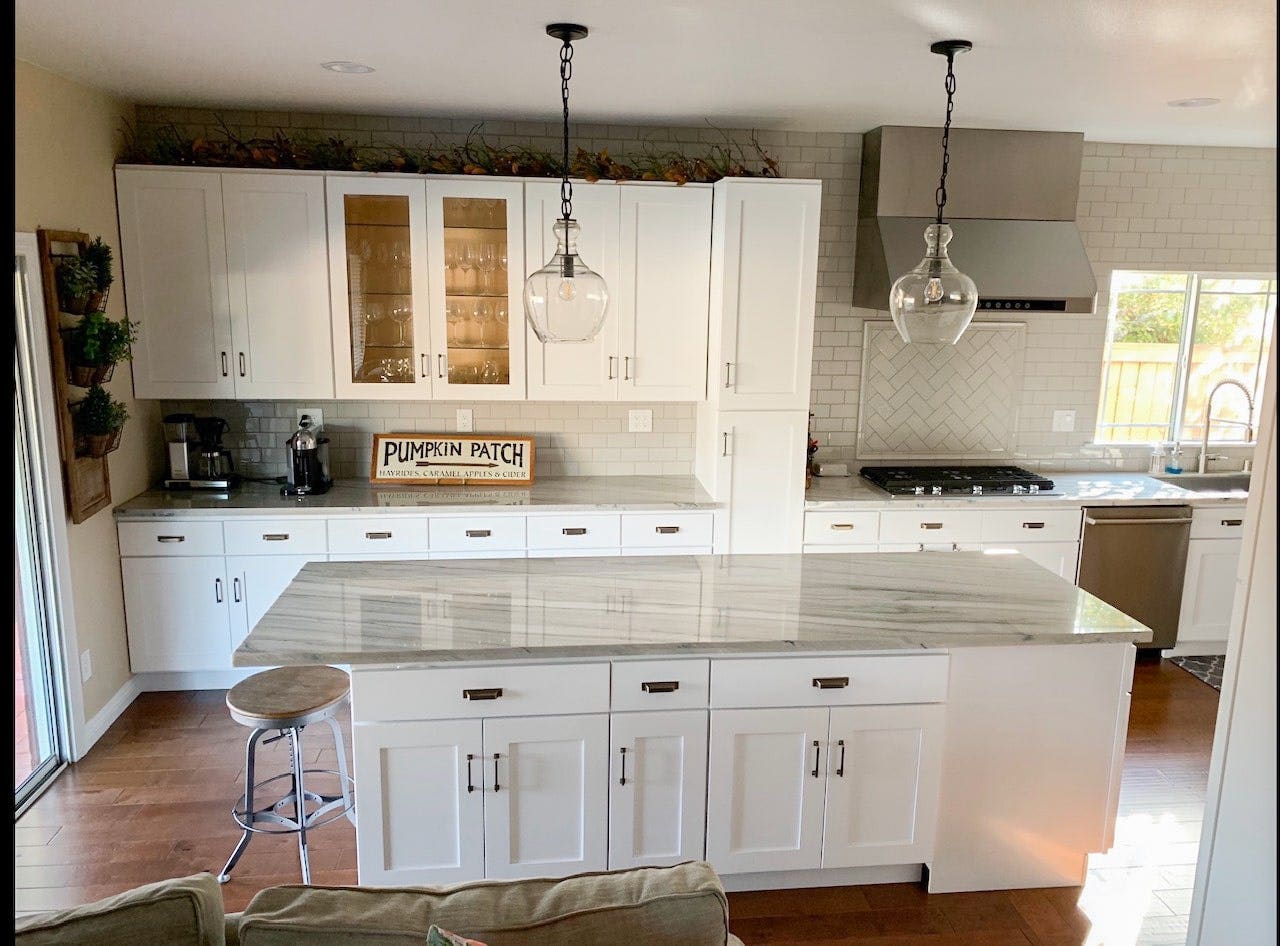
What You Need
- Foil tape (available on Amazon)
- Duct Sealant (available on Amazon)
- Duct wrap or insulation (available on Amazon)
The foil tape sticks securely to the seams on the metal duct to keep the air in. Duct sealant also helps to keep the air from escaping your duct. It’s easier to apply on the duct elbows where tape won’t sit very well. Once you have the sealant and tape on the duct, you can cut and attach the insulation. Then, seal it with foil tape.
Check out the full step-by-step process below.
- Apply foil tape to horizontal seams in the ductwork.
- Apply duct sealant to the elbows and use it to secure the tape in place.
- Wrap some foil tape around the ductwork one full circle.
- Extend the tape an additional two to three inches then cut it.
- Line up your strip of tape with your insulation.
- Cut the insulation. You will wrap it around the duct.
- Wrap the insulation around the ductwork. You may need a friend to help with this.
- Secure it in place with foil tape.
What type of duct is best for venting a range hood?
Rigid duct is the best duct for a range hood. It’s a cost-effective and durable option for your range hood vent. Learn more about rigid duct in this article.
The higher the CFM of your range hood, the larger the duct you’ll need.
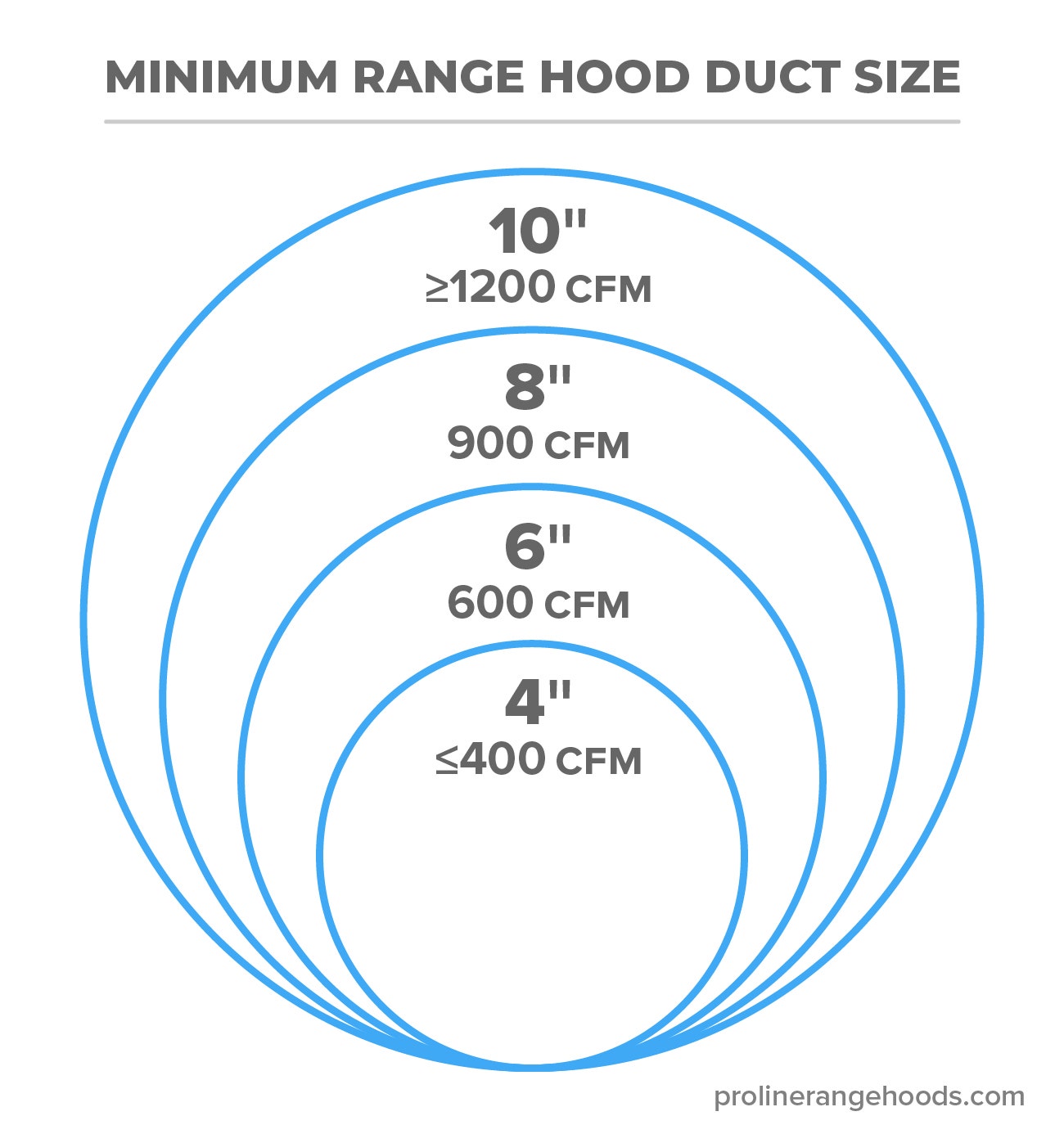
How do you seal a range hood duct?
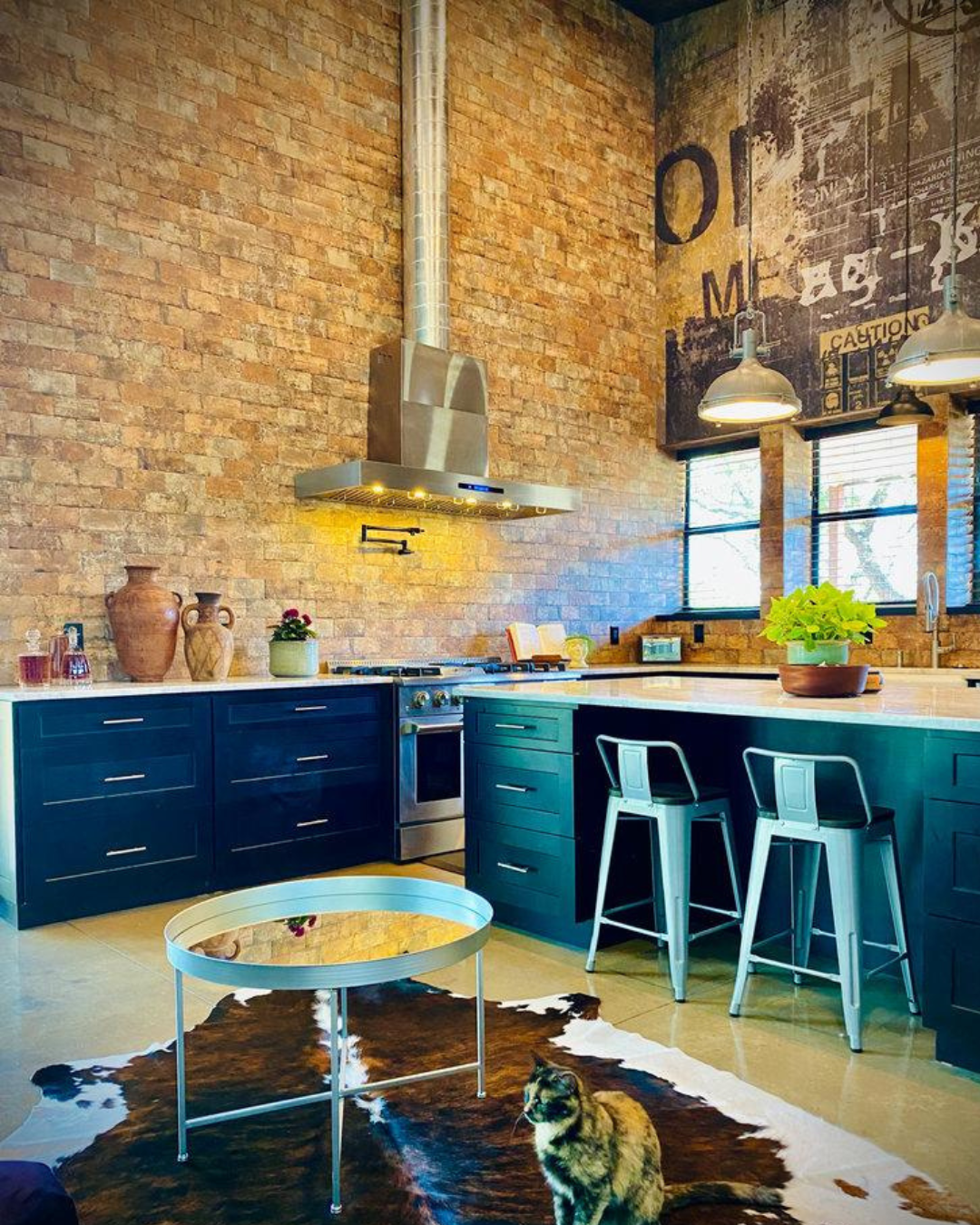
Seal a range hood duct by securing the edges and elbows with aluminum foil tape. The foil tape will help keep the ductwork airtight. Learn more in our article on how to seal a range hood vent.
Is it OK to vent a range hood into the attic?
No, you do not want to vent a range hood into the attic. Instead, you want the smoke and fumes to move to the outside of your home. The buildup of dirt and chemicals in your attic can be dangerous to your health. It will also leave your attic with a lot of grease and grime. The greasy air in your attic may also escape back into your home.
Learn more in our article, Is it OK to vent a range hood into the attic?
Should a range hood be vented?
Yes, if possible, it is best to vent your range hood through the wall or ceiling. A ducted range hood moves all the smoke and cooking exhaust out of your home, while a ductless range hood simply recirculates the air.
Can a range hood be vented through the wall?
Yes, wall range hoods and under cabinet hoods are often vented through the wall. Venting through the wall is always preferred to installing a ductless hood. A hood vented through the wall will keep your kitchen air cleaner and fresher than a ductless hood.
Before you vent your hood through an interior wall, make sure that:
- You have the space for ductwork.
- You have the appropriate duct size.
- You can run the duct using two elbows or less.
- You can run less than 30’ of ductwork.
- You have at least 18” of space between the top of the hood and the first elbow.
How far can you run a range hood vent?
Run your range hood vent for a maximum of 30’. A duct run longer than 30’ will make it tougher for your greasy kitchen air to get to the outside of your home. Your hood likely won’t have enough power to push all that air 30+ feet to the outside of your home.
Do you really need a vent hood?
Yes, a vent hood is a beautiful and functional appliance for your home. It improves your air quality and streamlines your experience in the kitchen. Check out our complete guide answering this question right here.
How to Install A Ducted Range Hood
Can you install a range hood yourself?
If you’re comfortable with a little DIY work, you can install a range hood yourself. Here’s a couple of helpful guides:
How to Vent a Range Hood on an Interior Wall
How to Vent a Hood Through the Ceiling
How to Install A Kitchen Exhaust Duct
Ductwork installation may seem complicated at first. Yes, there are a few steps to it, but the average homeowner can tackle this project in a few hours. Check out our complete guide at this link.
That wraps up our guide on vent hood insulation and ducting. Are you going to insulate your vent hood? You should definitely consider it. If you have any questions about your range hood installation, please call our customer support team at (877) 901 – 5530.
For more articles on ducting and range hood installation, click on the links below.
Related Articles
How to Install a Range Hood Insert
Can I install my range hood over an open fire?
Average Range Hood Installation Time and Cost
Should a vent hood duct be insulated?
You can insulate your vent hood duct, but it’s not required. Insulating your vent hood duct will keep the noise down and keep your greasy kitchen air from escaping into your joists and attic.
Should a vent hood duct be covered?
To protect your vent hood duct from damage, we recommend that you cover the duct in your cooking space with a stainless steel chimney. The chimney completely covers the ductwork in your kitchen. This makes the hood look more appealing and keeps the duct well-protected.
Should a vent hood duct be above the roof?
You have two options to vent your hood duct: horizontally through a wall or vertically through the ceiling. Typically, you cap off your vent with a wall cap or roof cap. So a vent hood duct won’t be above the roof, but you’ll instead install a roof cap. It keeps debris, dirt, and small animals from getting inside your vent hood duct and your home.
How do you insulate an exhaust fan duct?
1. Apply foil tape to horizontal seams in the ductwork.
2. Apply duct sealant to the elbows and use it to secure the tape in place.
3. Wrap some foil tape around the ductwork one full circle.
4. Extend the tape an additional two to three inches then cut it.
5. Line up your strip of tape with your insulation.
6. Cut the insulation. You will wrap it around the duct.
7. Wrap the insulation around the ductwork. You may need a friend to help with this.
8. Secure it in place with foil tape.
What type of duct is best for venting a range hood?
Rigid duct is the best duct for a range hood. It’s a cost-effective and durable option for your range hood vent. Learn more about rigid duct in this article.
The higher the CFM of your range hood, the larger the duct you’ll need.
How do you stop condensation in a range hood vent?
To stop condensation in a range hood vent, you can:
1. Install a backdraft damper.
2. Install a roof cap or wall cap.
3. Insulate your ductwork.
4. Replace your damper.
5. Change your hood to ductless or recirculating.
6. Add some downward pitch to the end of your duct run.
Depending on your kitchen design and setup, not all of these options may work for you. They are a great starting point to solving the problem of condensation in your range hood duct.
How do you seal a range hood duct?
Seal a range hood duct by securing the edges and elbows with aluminum foil tape. The foil tape will help keep the ductwork airtight. Learn more in our article on how to seal a range hood vent.
Is it OK to vent a range hood into the attic?
No, you do not want to vent a range hood into the attic. Instead, you want the smoke and fumes to move to the outside of your home. The buildup of dirt and chemicals in your attic can be dangerous to your health. It will also leave your attic with a lot of grease and grime. The greasy air in your attic may also escape back into your home.
Should a range hood be vented?
Yes, if possible, it is best to vent your range hood through the wall or ceiling. A ducted range hood moves all the smoke and cooking exhaust out of your home, while a ductless range hood simply recirculates the air.
Can a range hood be vented through the wall?
Yes, wall range hoods and under cabinet hoods are often vented through the wall. Venting through the wall is always preferred to installing a ductless hood. A hood vented through the wall will keep your kitchen air cleaner and fresher than a ductless hood.
How far can you run a range hood vent?
Run your range hood vent for a maximum of 30’. A duct run longer than 30’ will make it tougher for your greasy kitchen air to get to the outside of your home. Your hood likely won’t have enough power to push all that air 30+ feet to the outside of your home.
Do you really need a vent hood?
Yes, a vent hood is a beautiful and functional appliance for your home. It improves your air quality and streamlines your experience in the kitchen. Check out our complete guide answering this question right here.
Can you install a range hood yourself?
If you’re comfortable with a little DIY work, you can install a range hood yourself. Here’s a couple of helpful guides:




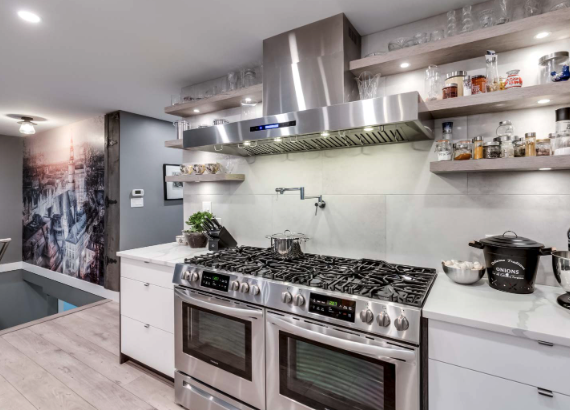
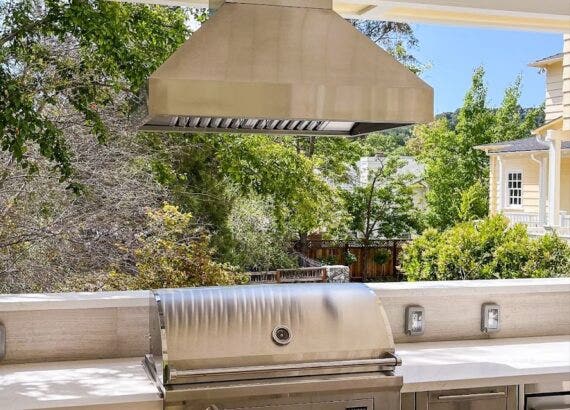
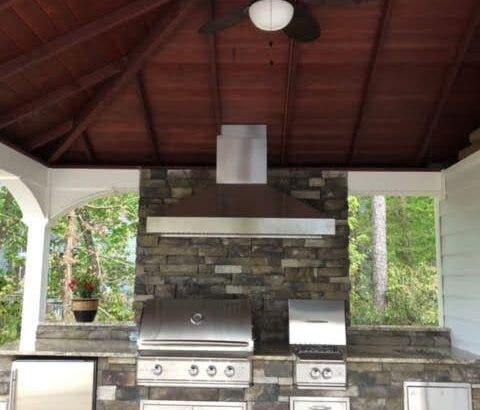
Comments are closed.